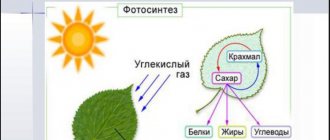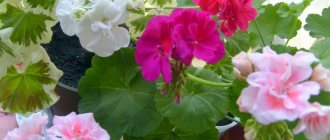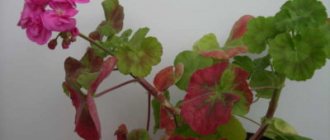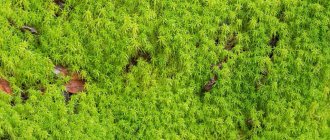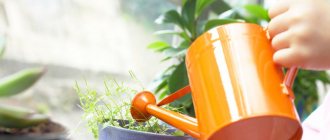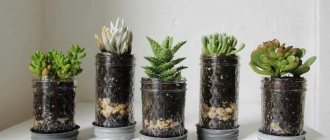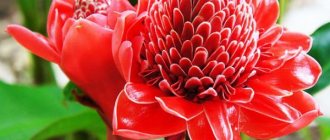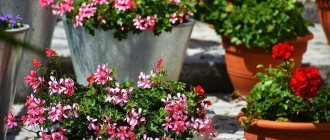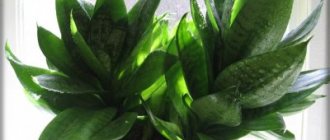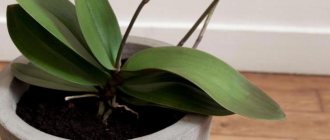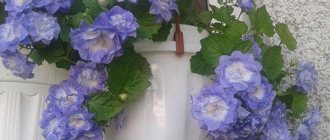Just like people and animals, plants vitally need nutrients, which they receive from soil, water and air. The composition of the soil directly affects the health of the plant, because the soil contains the main microelements: iron, potassium, calcium, phosphorus, manganese and many others. If any element is missing, the plant gets sick and may even die. However, an excess of minerals is no less dangerous.
How do you know which element in the soil is not enough or, conversely, too much? Soil analysis is carried out by special research laboratories, and all large crop-growing farms resort to their services. But what should ordinary gardeners and home flower lovers do, how can they independently diagnose a lack of nutrients? It's simple: if the soil lacks iron, phosphorus, magnesium and any other substance, the plant itself will tell you about it, because the health and appearance of a green pet depends, among other things, on the amount of mineral elements in the soil. In the table below you can see a summary of the symptoms and causes of the disease.
Let's take a closer look at the symptoms of deficiency and excess of individual substances.
Where do plants get their nutrients naturally?
| Blooming orchid |
Under natural conditions, each plant participates in the cycle of substances in nature.
Earthworms, fungi, bacteria and soil-dwelling insects break down dead organisms into their constituent elements. This produces important minerals necessary for plant nutrition. They are absorbed by the plant through the roots and are used as building material for new cells. When a plant dies, it is processed by soil-dwelling insects and microorganisms; the mineral compounds that made up its tissues are decomposed into their constituent elements and become available to other living organisms.
Indoor plants are excluded from this cycle of substances, and therefore they have to be content only with those mineral substances that we provide them.
Since the volume of soil in the pot is not particularly large, quite often plants suffer from a lack or excess of nutrients.
Types of fertilizers
Traditionally, all fertilizers are divided into three groups: organic, synthetic (mineral) and combined. In addition, many gardeners use so-called folk remedies, most of which are of organic origin.
Synthetic
Modern manufacturers make it easier for the buyer to choose by producing both universal formulations and specialized ones that take into account the needs of individual groups of plants. For example, fertilizers for orchids, roses, violets, begonias, pelargoniums and surfinias, ficus and palm trees, cacti and succulents.
Release forms and methods of application
According to their state of aggregation, ready-made nutritional mixtures can be solid (powders, granules, sticks, tablets) and liquid (concentrated solutions, tonics, sprays).
Concentrates and powdered fertilizers are diluted with water before use. Liquid ones are more convenient: it’s easier to measure the required dose with a cap. To prepare a solution from powder formulations, use a teaspoon, but you can overdo it by pouring it in a heap. In addition, they take longer to dissolve. Perhaps the only disadvantage of liquid drugs is their higher cost.
Granules, sticks, tablets are considered long-acting fertilizers, that is, they dissolve gradually, releasing nutrients for a long time, which is a great help for busy or forgetful people.
Granules are convenient to add to the soil during transplantation
Sticks and tablets are easy to use: you don’t need to calculate the dose, you just need to stick it in the ground. In addition to good nutrition, thanks to macro- and microelements, they help protect the plant from diseases and pests, and strengthen the immune system.
Foliar feeding
Many powdered and liquid fertilizers are suitable for both root and foliar feeding (this is indicated in the instructions for the preparation). They are carried out by spraying on the leaf. If a flower stops growing with normal care and begins to wither, it needs to be quickly revived. The outer and inner surfaces of the leaf blades are generously moistened with the working solution.
This method cannot be used on plants with fleecy leaves: gloxinia, Usambara violet (Saintpaulia), streptocarpus, ginura.
On pubescent leaves, for example, gloxinia (pictured), water droplets linger longer, which increases the risk of sunburn, fungal diseases, and rot
Nowadays, various preparations for foliar feeding of orchids and deciduous plants are widely available on sale. For example, Bona Forte tonic contains vitamins and a biostimulant - succinic acid, which activates growth, helps cope with stress, and disinfects. A spray of the same brand for hard leaves guarantees their shine, brightness, and protection from fungi and insect pests. Suitable for ficus, sansevieria, croton, anthurium.
The main method of applying fertilizers is root feeding. Foliar ones are used as auxiliary ones when you need to quickly replenish the supply of microelements or help the plant recover.
Foliar feeding is considered most effective in cases of signs of deficiency of individual nutrients.
Manufacturers usually produce entire lines of different types of fertilizers. When choosing one or another composition, you should listen to the recommendations and purchase several drugs for complete care.
Folk remedies
Avid flower growers use various available means to feed their “green pets”. You can feed indoor flowers at home with food and even waste that is usually thrown away in everyday life.
Natural fertilizers are environmentally friendly, safe for living organisms and the environment
Popular recipes for preparing nutritional formulations and options for their use are presented in the table:
| Fertilizer | Meaning | Mode of application | Notes |
| Yeast | Stimulation of growth and flowering. Fungi activate the activity of soil microorganisms, their processing of organic matter, and increase plant immunity | A packet of dry yeast, 4 pieces of instant refined sugar, 1.5 liters of warm water. The mixture is infused for 2 hours in a warm place. Before watering, dilute with settled water at room temperature in a ratio of 1:5. Water once in spring, summer and autumn. 50-100 ml of solution is consumed per 1 kg of soil | Yeast depletes the soil in terms of potassium and calcium, so you need to first feed the plant with a complex with a predominance of potassium or wood ash |
| Sugar (honey) | Glucose is a source of energy, a universal building material | Sweet syrup is prepared in different ways, for example, 1 tablespoon of granulated sugar is diluted in 600 ml of water or 1-2 carefully crushed glucose tablets in 1 liter. Feed with a sweet solution once a month, avoiding excessive soil moisture, so as not to create favorable conditions for the development of mold. | Carbon dioxide is needed to metabolize glucose. If it is not there, mold and rot develop in the soil. Along with sugar, EM preparations containing bacteria are added, which produce carbon dioxide during their life processes. Large decorative foliage plants and succulents |
| Banana peel | Contains potassium, manganese, organic substances | Peels from three bananas are lowered to the bottom of a 3-liter jar, filled with warm water, left for two days, diluted with water 1:1 before watering. | The most responsive to banana fertilizing are cyclamen , begonia , and saintpaulia. |
| Citrus peel | Improving soil health, increasing plant immunity, repelling insect pests (scale insects, spider mites) | The peels of lemons, oranges, and tangerines are cut into pieces. The container is filled one third with them, poured with boiling water, and left for a day. 50 ml of infusion is poured under one plant once a month | Loves similar infusions spathiphyllum. Plants, infected with insects cannot be cured; fungicidal preparations must be used. The pungent smell of citrus fruits corrects the behavior of cats who love to dig in flower pots. To maintain a stable aroma, fresh crusts must be changed every two days. |
| Onion peel | Rich in carotene, vitamins, microelements and phytoncides, which help cope with pests and pathogenic microflora | Place a handful of onion peels in a saucepan with 2 liters of water, boil for 15 minutes, leave for 3 hours. The infusion is used for root and foliar feeding once every two months. | Succulents (cacti, fat plants) and ficus plants do not like onion watering. |
| Tea brewing | Contains potassium, calcium, magnesium, iron. Improves soil structure | Dried loose leaf tea leaves (1 cup) are poured with boiling water (3 l). After cooling, you can water | Attracts fruit flies Drosophila. Tannins help increase soil acidity |
| Coffee grounds | Contains nitrogen, which becomes available only after processing by bacteria. Improves soil structure and aeration | Dry the coffee grounds, add a teaspoon per 500 g of soil | Excess can cause acidification of the soil. It is believed that roses , azaleas , and anthurium |
| Eggshell | Enriches the soil with calcium and other minerals, improves structure, prevents fungal diseases | When replanting plants, it is better to provide a 2-3 cm layer of shell drainage at the bottom of the flower pot. It will regulate water circulation, air permeability, and after decomposition, saturate the soil with minerals | Since the shell reduces acidity, it should not be used for flowers that love acidic soil. These include Usambara violets, gloxinias, camellias, azaleas, pelargoniums, hydrangeas, anthurium |
| Wood ash | Contains potassium, phosphorus, calcium, iron, magnesium, sulfur, zinc | To prepare ash infusion, take 2 teaspoons of ash per 1 liter of water, infuse for 7 days, feed every 2 weeks | Fans of acidic soils cannot tolerate ash (see examples of colors above) |
Essential Nutrients
Typically, nutrients are divided into micro- and macroelements depending on the needs of the plant.
Most of all, the plant needs macroelements: nitrogen, phosphorus and potassium, as well as sulfur, magnesium and calcium. Microelements include boron, iron, copper, manganese, molybdenum and zinc. Each element of mineral nutrition performs at least one, and sometimes several important functions in a plant. Microelements are needed by the plant in small quantities, but their deficiency negatively affects its viability.
Below is a list of the main nutrients and the functions they perform in the plant body.
Nitrogen (N)
It is considered the most important for the plant because it is the main component of plant protein compounds. Nitrogen is necessary for the growth of leaves and shoots, as well as for the formation of green leaf cells (chlorophyll).
Phosphorus (P)
Phosphorus affects the growth of roots, buds and buds. In addition, it is necessary for the ripening and coloring of flowers, fruits and seeds.
Potassium (K)
This element is necessary primarily to maintain the water balance of the plant, because potassium helps retain water in the cells. In addition, potassium increases plant resistance to pests and the ability to tolerate unfavorable conditions.
Sulfur (S)
Just like nitrogen, it is a building material for the formation of protein plant compounds and chlorophyll.
The latter also applies to another element - Magnesium (Mg).
Calcium (Ca)
increases the strength of plant tissues and, like potassium, helps increase plant endurance.
Pests
Harmful insects deprive plants of vitality, leaving them without essential microelements and vitamins. Harm is caused not only by the insects themselves, but also by the larvae.
Gall aphids settle primarily on the inside of leaves, drawing juice from them. The larvae are capable of surviving even in severe frosts. For this reason, it is quite difficult to fight them.
Bud moth - an insect attacks a bush, eating the buds of the plant. As a result, the process of growth and ovary slows down.
Currant bushes should be sprayed with special pest control agents. Among them we can highlight “Zircon”.
Signals indicating a lack or excess of minerals
| Citrus leaf chlorosis; its cause may be, for example, the use of hard water for irrigation. |
Usually the plant receives a sufficient amount of nutrients if we do not forget to regularly feed it during the growth period, and perennial plants are transplanted into new soil from time to time.
However, sometimes gardeners notice growth or color disturbances in their pets and cannot find the reason for this. Although they cannot detect any pests, they may use some special protective agent just in case.
| This chrysanthemum suffers from a lack of magnesium. |
However, all this does not eliminate the real reason, which lies in the malnutrition of the plant.
The following symptoms can be observed especially often in indoor plants, indicating a lack or excess of minerals. About nitrogen deficiency
can be recognized by their slower growth: ornamental leaf plants produce very few new shoots. The leaves turn pale, become light green in color, and reddish shades are also possible. This primarily manifests itself in older leaves, which fall prematurely at the next stage.
| This is what the leaves of a plant suffering from a lack of minerals look like. From left to right: with a lack of nitrogen, phosphorus and potassium. |
Excess nitrogen
is manifested in the dark green color of the leaves and the porous soft tissue of the plant.
Resistance to diseases and pests is reduced. If flowers do not form or are pale in color, it means there is a lack of phosphorus
. In this case, often the lower, older leaves become dirty green, in addition, other colors may also be present in their color, from blue to red and purple. Young leaves remain small and their tips curl upward.
A plant suffering from potassium deficiency
, becomes lethargic, especially on warm and sunny days. It remains small and squat, often the leaves turn pale at the edges and fall off. With a lack of potassium, the plant’s resistance to various diseases and pests decreases.
A typical sign indicating iron deficiency
, is the so-called chlorosis of the leaves: their veins become dark green, and the surface of the leaf between them turns pale and acquires a yellowish tint. Plants especially often suffer from iron deficiency when daylight hours decrease or when the soil acidity level decreases.
Yellowing of seedlings
If this happened a short time after planting , then the reason why the leaves of apple tree seedlings turn yellow most likely lies in the wrong choice of location or deepening of the specimen.
In the first case, the development of the root system is hampered by a lack of oxygen, which arose as a result of the high humidity of the lower layers of the soil.
Exceeding the planting depth by 10-15 cm is also a common reason why leaves on an apple tree turn yellow.
Another reason for yellowing of the foliage of a seedling is due to unsuitable soil composition , for example as a result of high (alkaline) pH due to excess lime or fresh manure.
The leaves turn pale yellow and then fall off.
The disease is called chlorosis , other causes of which include:
- Deficiency of iron salts, which is required for the synthesis of chlorophyll (green pigment).
- Freezing of roots after winter.
- Oxygen deficiency in the soil as a result of waterlogging.
Soil acidity level
In connection with feeding plants, it is also worth saying a few words about the level of soil acidity. The acidity level refers to the ratio of acids and alkalis. For greater clarity, let's introduce a scale from 1 to 14. At an acidity level of 7, the soil is considered neutral. If the pH is less than 7, then the soil is acidic, if more, then it is alkaline.
The acidity level of the soil determines the ability of plants to absorb nutrients. They are best absorbed if the soil is slightly acidic or neutral (pH from 5.5 to 7). If the pH value deviates in one direction or another, then the plant may show signs of lack of nutrients, although the soil will contain them in the required quantity.
When buying a plant, we can assume that the soil is neutral or slightly acidic. However, over time, unwanted deviations may occur.
The more lime contained in the irrigation water, the faster the soil acidity level decreases (the pH value increases). The plant's leaves begin to turn yellow (nitrogen deficiency) or leaf chlorosis develops (iron deficiency).
These signs appear especially often in plants that prefer acidic soil. These include camellia (Camellia japonica), cattleya (Cattleya labiata) and azalea (Rhododendron simsii). These plants feel best if the pH is 4 - 5. When growing them, you can use special ammonium-containing mineral supplements that increase the acidity of the soil or maintain it at the desired level. We mean oxidizing additives.
In addition, we also recall that water for irrigation must be soft in order to prevent the accumulation of alkalis in the soil.
If you suspect that your plants are not growing properly due to an incorrect level of soil acidity, check the pH value using a special pH tester, which can be purchased at a flower or garden store.
| Various types of mineral fertilizers: 1. Nutrient sticks; 2. Delayed release fertilizers; 3. Mineral supplements in granules; 4. Horn shavings; 5. Blood meal; 6. Horn flour. |
Additional care
One sign of a healthy apple orchard is the bright green color of each tree's leaves (though each species may have its own typical, unique shade). This bright, rich green color comes from chlorophyll, a chemical that is vital to the process of photosynthesis, through which plants produce the substances they need to thrive. The nutrients needed to produce chlorophyll are usually present in the soil and taken up by the roots, but may need to be supplemented with fertilizer. We have already mentioned nitrogen and iron, now let's look at rarer substances that are missing when the leaves on your apple tree lighten.
Phosphorus
Phosphorus is mainly used by the plant for flower set, fruit formation and seed development. But its deficiency causes slow growth of the entire tree and a purple, dark yellow tint on the leaves. This substance is very difficult to wash out of the soil, and if there is a shortage of it, it is enough to fertilize the soil with crushed bone or crushed rock phosphate.
Potassium
This nutrient is less important for quality fruit growth, but deficiency will be noticed as yellowing of the edges of mature leaves. An inexperienced gardener may have trouble identifying the missing substance, because the same signs indicate a lack of nitrogen. Good sources of potassium include kelp meal and dried greens (grass) as fertilizer.
Magnesium
Magnesium is considered a secondary nutrient required by fruit trees in large quantities. The element is important for the production of chlorophyll and plant enzymes. One of the symptoms of magnesium deficiency is also chlorosis - yellowing of leaves between the veins. Dolomitic limestone is a good source of magnesium.
Similar articles:
Tomato leaves are withering - what to do?
A complete guide to caring for gerberas
Rose spray - a simple guide to planting and care
The need of indoor plants for minerals
Plant nutrient requirements depend on a number of factors. It is especially high during the growth period, that is, from March to September.
Most plants need to be fed at least once a week during this period. The situation is different in winter, when each plant has its own feeding regime. Plants overwintering in a shaded or cool room are fed once every three to four weeks. Plants that enter a dormant period in winter generally stop feeding. The need for various minerals varies greatly depending on the phase of plant development.
A young plant requires fertilizers with a high nitrogen content, which promotes the growth of stems and leaves. Later, during the flowering period, phosphorus-containing mineral supplements should be added.
Potassium is always needed in sufficiently large quantities by the plant, regardless of the phase of development.
Proper feeding of plants
During the growth period, fertilizing should begin two to four weeks after purchase.
If you planted the plant yourself, start feeding it only after sprouts appear. At the same time, you have a choice between mineral and organic fertilizers. When using mineral fertilizers, nutrients are immediately available to plants. As for organic fertilizers, the nutrients they contain are absorbed by the plant more slowly. The most common organic fertilizers are compost and manure. However, they are more suitable for a garden or flower bed than for indoor plants. The mineral content of homemade compost cannot be determined, and this can easily lead to damage to sensitive indoor plants due to improper feeding. Other organic fertilizers, such as horn shavings, bone and blood meal, and guano, are best added to the soil when replanting.
In specialized stores you can purchase organic fertilizers, which also contain microorganisms that have a beneficial effect on the composition of the soil and prevent excessive evaporation of water and the formation of crust on the soil surface.
The easiest way to feed indoor plants is to use mineral fertilizers, because... in this case, the plant can receive all the important nutrients in the right proportion.
Liquid mineral fertilizers
This is the most common way to feed plants. In this case, a concentrated nutrient solution is used, containing all the necessary micro- and macroelements. There are special mixtures with a high nitrogen content for ornamental leafy plants. In contrast, mixtures with a high phosphorus content are used for ornamental flowering plants.
The method of using this type of fertilizer is quite simple. Fertilizer concentrations should not be higher than those recommended on the package, even if your plants show symptoms indicating nutrient deficiency. Too high a concentration of fertilizer can damage delicate roots.
Soluble mineral fertilizers in the form of salt
| Feeding with a feeding stick is not difficult. |
They contain all the substances necessary for the plant, including magnesium.
The appropriate amount of fertilizer is dissolved in water. Usually only a small amount of salt is needed, it is best to measure it using a scale. Tablets and sticks
This method of feeding is easier, but less accurate compared to those described above. Depending on the size of the pot and plant, a certain number of nutrient sticks or tablets are introduced into the soil.
The plant absorbs the minerals contained in them gradually, and the danger of oversaturation is reduced.
Special fertilizers
Some plant species, such as cacti, bromeliads or orchids, have their own special feeding requirements. Special nutrient mixtures are available for sale for such plants.
Infectious nature
A significant change in the natural color of the leaf cover often occurs when the plant is infected with a virus or bacteria. If the leaves quickly change their shade, becoming paler or yellow, then there is a possibility that they have been affected by the dangerous yellow mosaic virus.
In most cases, the disease attacks plants at the beginning of the growing season, causing the leaf blades to become covered with yellow streaks and stripes. As the disease progresses, they turn into solid spots, and then the leaf begins to slowly dry out and fall off. As is known, the causative agent of the disease is a specific soil fungus called Polymyxa. It is found in the upper layers of the soil and is transferred to the crop being grown by contaminated tools.
The virus is also carried by all kinds of insects, including aphids. This is especially often noticed in plantings of plants from the legume family, where different types of aphids often live.
If the infection begins to affect the plant at the beginning of the growing season, then after a short time it may simply die. The lack of proper treatment leads to damage not only to the leaves, but also to the flowering elements, which play a key role in proper ripening and fruiting.
Often the appearance of chlorosis is explained by the activity of mycoplasma-like organisms , which can be carried onto green parts by the following types of insects:
- Psyllids.
- Cicadas.
- Nematodes.
In addition to indoor plants and vegetable crops, fruit trees and berry bushes also suffer from chlorosis. In this case, the disease is of a slightly different nature - the pathogen enters it through pollen or during vaccination activities. Most often, apple trees and stone fruits are affected by chlorosis. Due to significant necrotic changes that result from the development of the disease, the affected leaf cover begins to die, and yields are noticeably reduced. Also, the natural process of photosynthesis in plants is suspended.
Infected trees, bushes or garden plantings stop bearing fruit normally, and the ripening time of fruits is greatly slowed down. Their number is also decreasing. Gardeners from European countries talk about the massive death of vineyards from chlorosis.
Help in case of emergency: feeding plants through the surface of leaves
Plants that are especially acutely suffering from a lack of minerals can be fed through the surface of the leaves. This method is used, for example, when there is a lack of iron in the soil, when chlorosis of the leaves appears. Very often it is observed in bougainvilleas, hydrangeas, brunfelsias and citrus fruits. If the reason for this is the increased pH value, then adding liquid fertilizers to the soil will not help the matter, since the plant will not be able to absorb them.
In this case, we recommend purchasing an iron chelate (i.e., an intracomplex iron compound) from a specialized store. Dissolve it in water, and then spray the plant with this solution - preferably on some washable surface, otherwise unsightly stains may remain. This method of feeding is recommended, first of all, for the plants mentioned above. Under no circumstances should it be used on plants that do not like water getting on their leaves.
It is very useful to feed newly rooted cuttings through the surface of the leaves with nutrient mixtures high in nitrogen. However, feeding plants through leaves is only an additional measure.
Gardening tips
To preserve currants, you need to carefully monitor the leaves of the bush, examining them from all sides. Starting in spring, summer residents treat the bushes with Bordeaux mixture. If the leaves begin to turn pale, it means there is a deficiency or excess of microelements, as well as infection with a disease. In this case, summer residents urgently need to treat the plants with fungicides. You can feed black currants using other means.
What to do if there is an excess of minerals?
The plant can easily cope with a small excess of fertilizers on its own; just stop feeding for a while. The soil must be constantly moist so that mineral salts do not damage the roots.
If the mineral content in the soil is much higher than normal, then you have two options: replant the plant or wash the soil. Place the pot under running water in the sink for a quarter of an hour. The water should not be too cold and flow well through the drainage hole. You can also submerge the pot in a bucket of water up to about soil level and wait until all the soil is saturated with water. Then remove the pot and let the water drain.
Repeat this procedure several times.
Yellowing of a young apple tree
The main reasons why leaves of a young apple tree turn yellow:
- If the groundwater is shallow, then a three-year-old young apple tree may begin to turn yellow (such cases are not uncommon).
- Young apple trees are not typically affected by fungus, unlike older ones, which are more often susceptible to yellowing of the foliage due to fungal infections. An actively growing tree may not have enough nitrogen.
- If not the entire apple tree turns yellow, but only individual branches with the formation of a brown edge near the leaf (marginal burn), then it is necessary to apply potash fertilizer.
- With a deficiency of sulfur and nitrogen, the color changes of young leaves are similar, so you need to fertilize with complex mineral fertilizer.
Other reasons why young apple trees turn yellow:
- Hot weather.
- Pests.
- Less commonly, fungal diseases.
The presence of spots on the leaves is a sign of scab or brown spot . Typically, scab damage is noticeable in the spring. Oily spots appear on the leaves, then a velvety coating appears and the plate turns brown and dries out.
To treat a young tree , Bordeaux mixture is used; Skor or Fitosporin preparations are also suitable.
To increase viability, the affected specimen is fed with nitroammophos, and the box is dissolved in 10 liters of water.
First, water the tree generously with several buckets of water, then add 2-3 liters of the prepared solution.
Watch the video about a disease such as scab:
Danger signals
| drooping leaves | |
| Flowers do not form, or they are small and pale in color | Summer: growth stagnation Winter: weak, elongated stems |
| Pale leaves. Yellow spots may appear | Dry brown spots; dry edges of leaves |
| Weak stems; premature loss of lower leaves | White crust on the surface of the soil and outside of the ceramic pot in areas with soft water |
Wrong landing site
Currant bushes love moisture-saturated planting sites where there are no drafts and plenty of sun. Red and black currants are planted in both elevated and lowland areas. The minimum distance between currant bushes should be one and a half meters. Currants are planted in the corners of the garden plot or along the fence.
It is not recommended to plant currant bushes in swampy areas, in areas near groundwater, or in ravines. By following these recommendations, you won’t have to wonder why the currant leaves are pale green, the young branches are emaciated, and the berries are small.
The ideal soil for planting currants is sandy loam or clay soil. When acidified, it is recommended to feed it with lime. For greater fertility, the soil is fertilized with organic matter.
